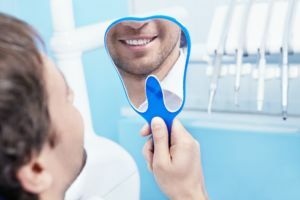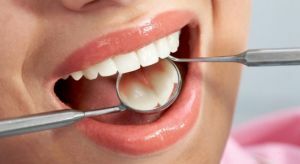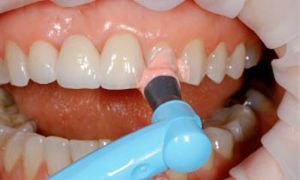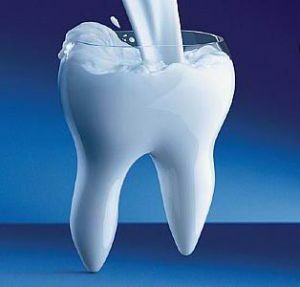 With different diseases of the oral cavity encountered at least once in a lifetime each. Dentists believe that their occurrence is associated with a violation of balance in the composition of microorganisms inhabiting it.
With different diseases of the oral cavity encountered at least once in a lifetime each. Dentists believe that their occurrence is associated with a violation of balance in the composition of microorganisms inhabiting it.
There is an opinion that personal hygiene, conducted carefully and according to the rules, is enough to maintain the oral cavity in order.
However, not everyone knows that the destructive effect on teeth and gums occurs during sleep. It was during this period that the harmful bacteria contained in the saliva are most active.
Self-examination of the oral cavity, in principle, can not detect any violations of its condition, except to ascertain the significant consequences of the diseases that have begun.
An example is tooth decay in the late stage, bleeding gums or their inflammation. Successful prevention at home is possible only in the case of a normal state of the microflora of the oral cavity.
Bacterial plaque on the teeth accumulates imperceptibly, which is why it is especially dangerous. Without professional oral hygiene, the risk of gum disease and tooth loss increases.
Dental hygienist - a new but necessary profession
Not so long ago, dental clinics in our country began to receive specialists called dental hygienists. In Europe, this profession has existed for almost a hundred years, due to it the level of dental diseases is low.
The task of the specialist is to teach his patient how to properly care for the oral cavity, to show in clear examples, what leads to a superficial attitude to hygiene procedures. Hygienist-dentist will help to select effective means for the prevention of diseases, based on the characteristics of the organism that came to the reception of a person.
The duties of this specialist also include: 
- diagnosis of various diseases of the oral cavity, from caries to mucosal lesions;
- carrying out various procedures, such as covering the teeth with special varnishes and gels;
- removal of various deposits;
- prescribes rinsing with medicinal solutions;
- , in addition, he educates in the field of dentistry in the environment of children and adults, explaining the importance of preventing dental and gum disease.
Professional oral hygiene identifies problems that can not be determined at home without special equipment.
After an examination at the hygienist, the patient receives advice on treatment and referral to other specialists. If necessary, the doctor performs a number of procedures to remove plaque.
In conditions of exceptionally independent dental care, sooner or later a visit to the dentist will be necessary because of the pain or complete destruction of the teeth.
Only regular professional hygiene can prevent the occurrence of unpleasant consequences due to insufficiently effective treatment of the oral cavity and keep the teeth in good condition for many years to come.
What is included in the complex of procedures?
Professional oral hygiene includes basic and additional procedures.
The basic ones are:
- Inspection of the oral cavity hygienist .It is carried out both to determine the composition of the remaining procedures, and to provide advice to
 on the proper conduct of daily hygiene.
on the proper conduct of daily hygiene. - Ultrasonic cleaning ( ultrasonic scaling).It is used to get rid of supragingival and subgingival calculus. The instrument used in this operation performs high-frequency oscillations at the speed of ultrasonic waves. The treated areas are irrigated with an aqueous mist to cool and transfer vibrations. Under this influence, the stone loosens and is removed from the tooth surface.
- Primary whitening .Can be carried out as one of the stages of integrated hygiene, and in the form of an independent procedure. Teeth are treated with special compounds that gently clean the enamel before the polishing step. After the initial whitening, the teeth acquire their natural color.
- Polishing .It makes the tooth surface smooth with a polishing paste. It is applied with a special tool -
 with rubber cups. The doctor treats the entire surface of the tooth, after which it acquires a mirror shine. On a polished enamel, the growth of tartar is noticeably weakening.
with rubber cups. The doctor treats the entire surface of the tooth, after which it acquires a mirror shine. On a polished enamel, the growth of tartar is noticeably weakening. - Determination of the gum condition .The presence of inflammatory processes and bleeding is checked, their causes are determined. If necessary, treatment is prescribed.
- Restoration of mineral content of teeth .This process is also called remineralization or fluorization. For the procedure, medicinal preparations enriched with salts of calcium, phosphorus and fluorine are used. Depending on the condition of the teeth, drugs that do not contain fluoride can be used. The purpose of this stage of hygiene is to reduce the sensitivity of teeth and increase their resistance to tooth decay. It is important to remember that remineralization is useless in the treatment of enamel with mechanical damages, in this case it is necessary to treat the tooth.
In addition to basic procedures, professional oral hygiene may include additional:
- Bleaching .Basic procedures give durability to teeth, relieve plaque and give them a natural color. Many people want to have bright white teeth that give the appearance aesthetic appearance. Bleaching is carried out with the help of special equipment and tools, since during its use aggressive substances, applied to the enamel, are used. Gums and mucosa should be protected from their harmful effects. Guarantee the conduct of this operation without consequences for the teeth can not, although all methods used in modern dentistry are reliable and have passed numerous tests. One of the most common side effects of bleaching is the increased sensitivity of teeth to cold and hot food. The effect of the procedure is retained for up to five years;
- Implantation of .It is used for tooth loss. In this operation, the implant is implanted into the bone tissue of the jaw. After he fuses with the bone, a prosthetic tooth is performed, in which the implant becomes the base of the crown. At implantation various materials, basically alloys on the titanic basis are applied. This operation is one of the most difficult and is carried out only in high-quality medical centers. Before it is carried out, the patient undergoes a course of examinations, the results of which select the material and shape of the implant.
 Professional hygiene of the oral cavity is carried out in stages. First - inspection, followed by a reading from the stone, primary whitening, polishing and fluorization.
Professional hygiene of the oral cavity is carried out in stages. First - inspection, followed by a reading from the stone, primary whitening, polishing and fluorization.
The hygienist may, after the examination, exclude some stages, based on the condition of the teeth. Additional procedures are carried out exclusively at the request of the patient.
Regular inspection of the dental hygienist is a guarantee of oral health. To go through the procedures of professional hygiene of teeth and gums must be at least twice a year. The lifestyle of some people requires a more frequent visit to a specialist in oral hygiene.
For example, when tea and coffee are used excessively, it is recommended to lighten the teeth at least once every two months. The same applies to smokers. Once in three months, those who wear braces should go to the hygienist.
